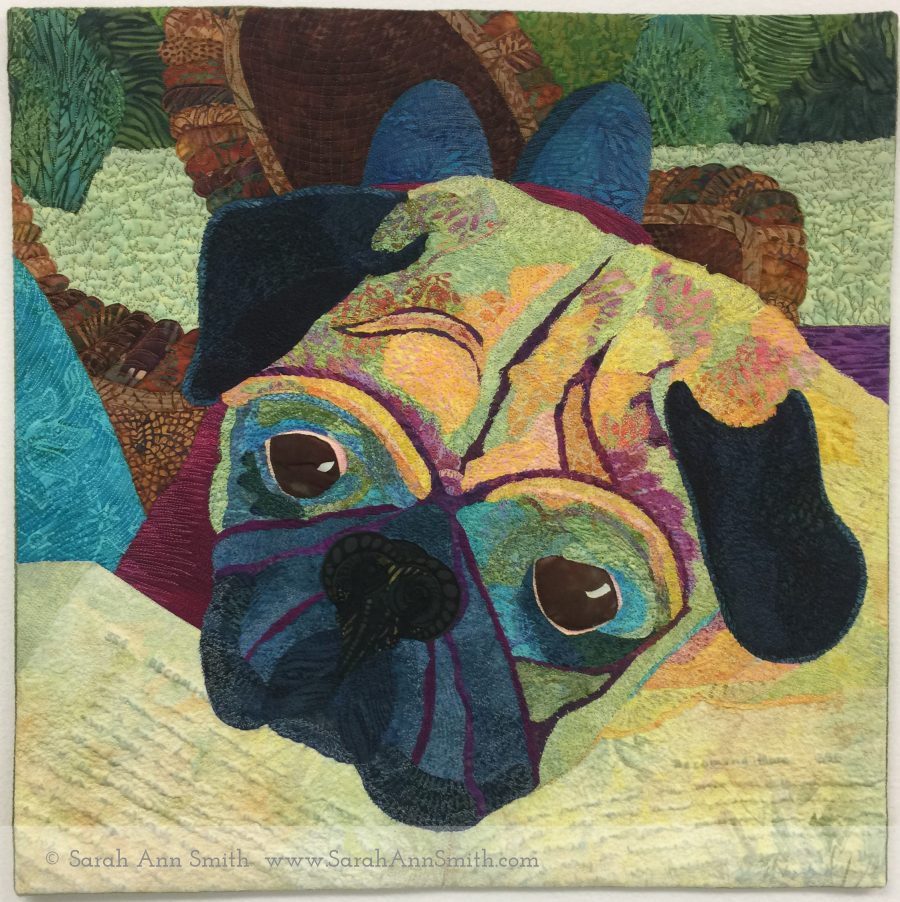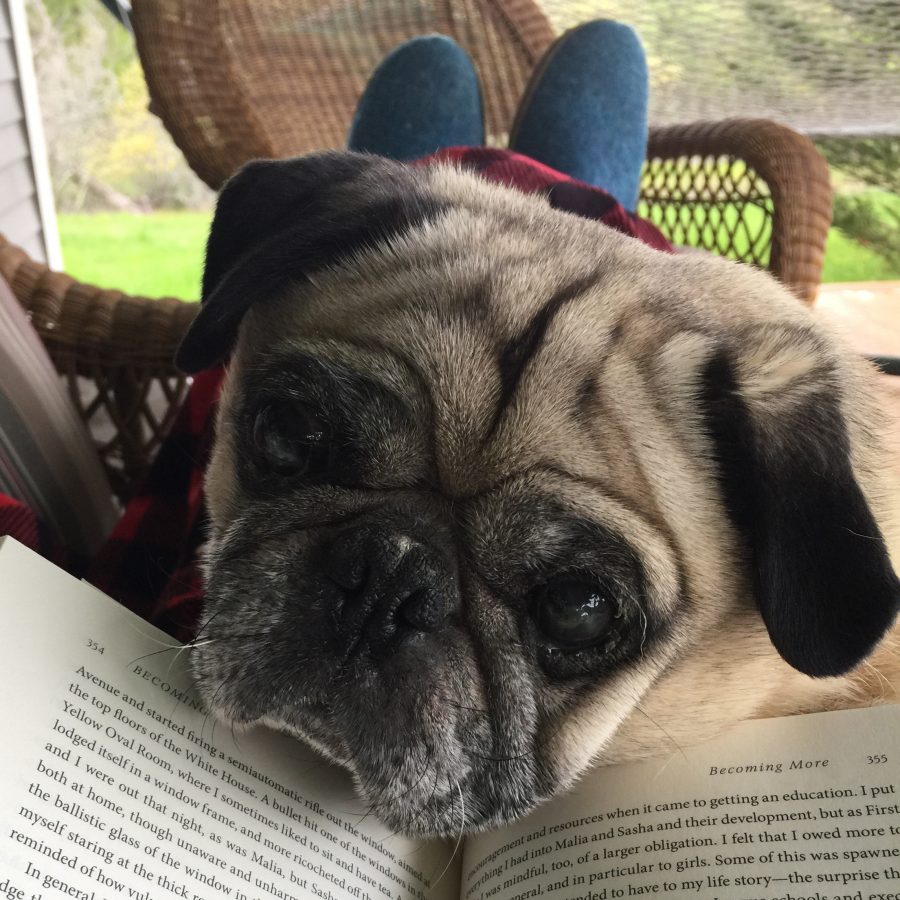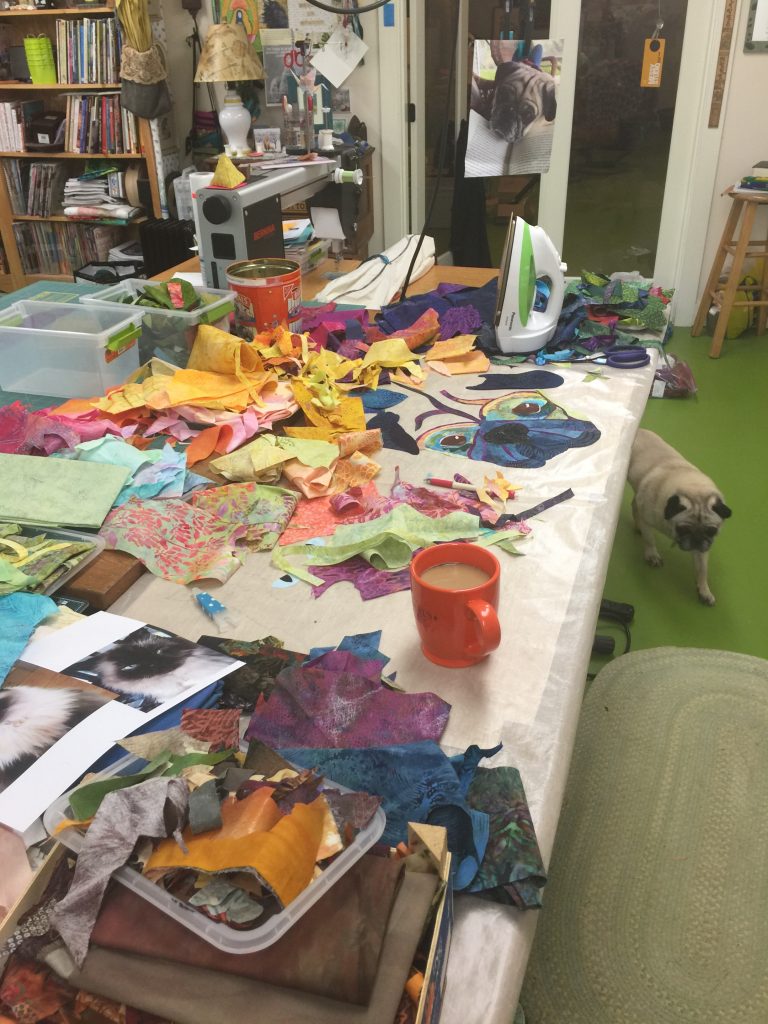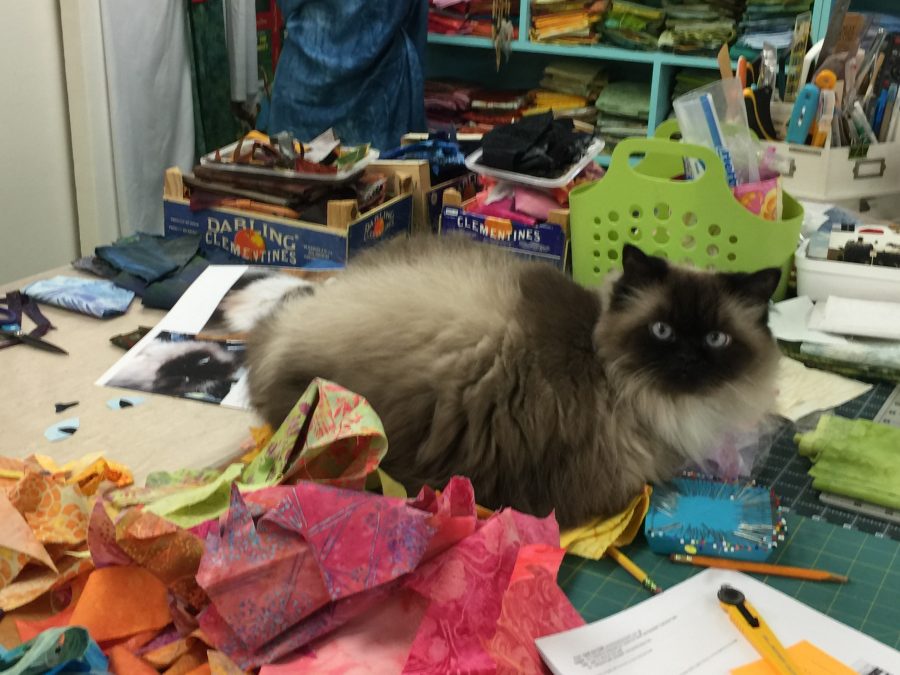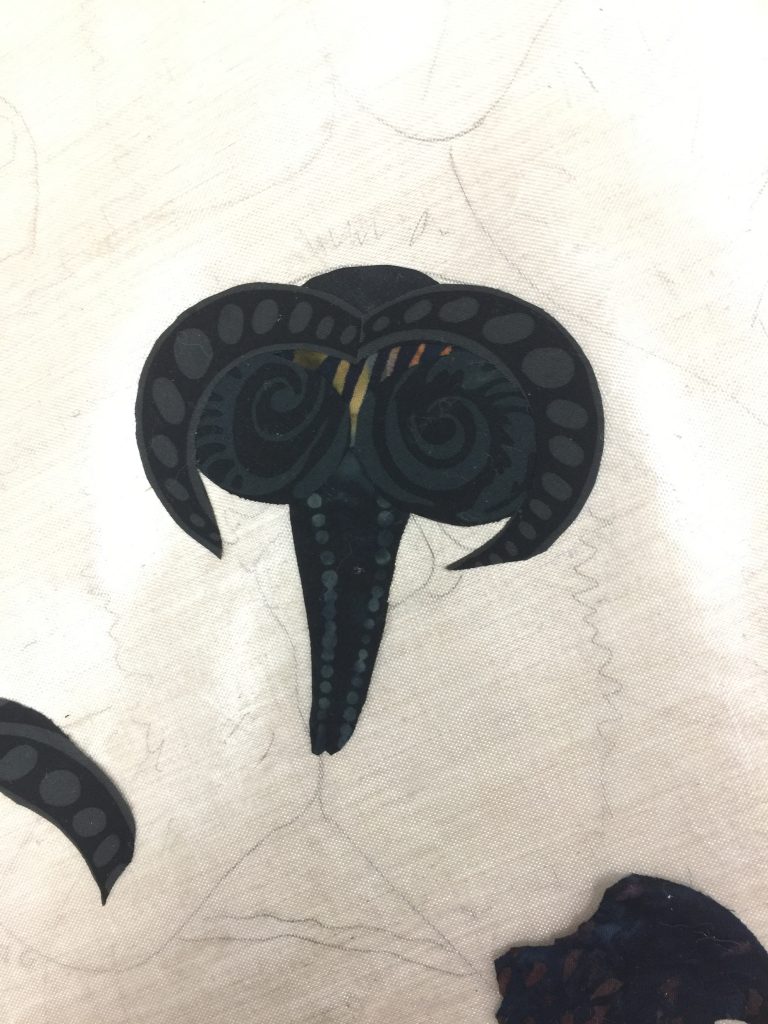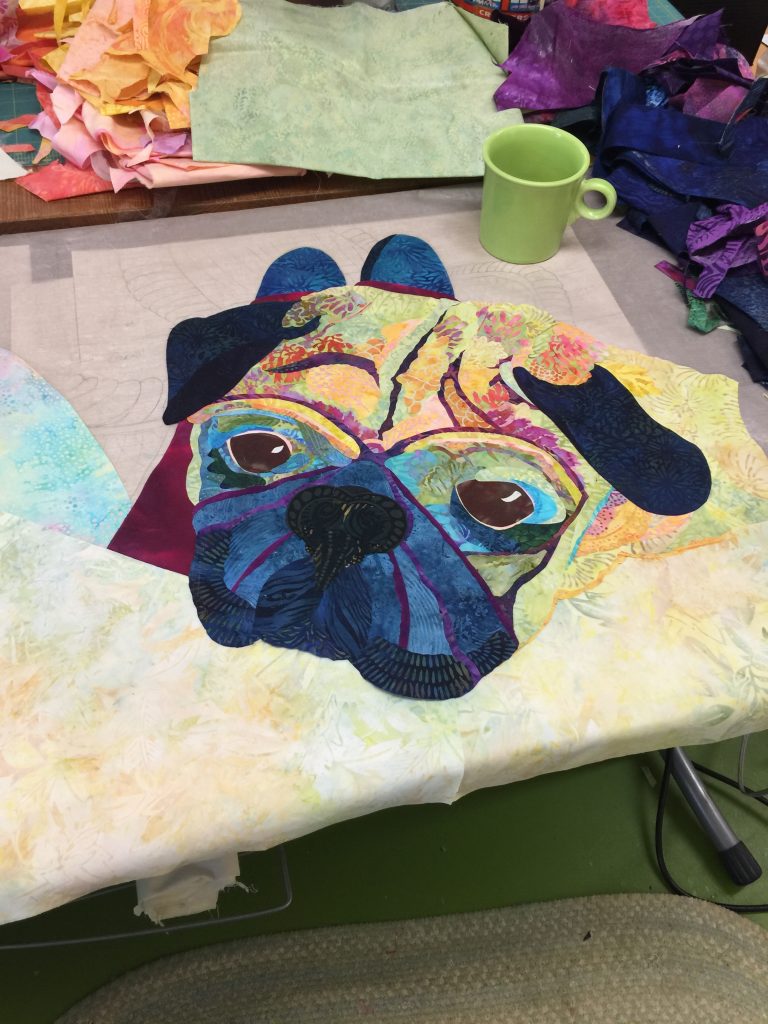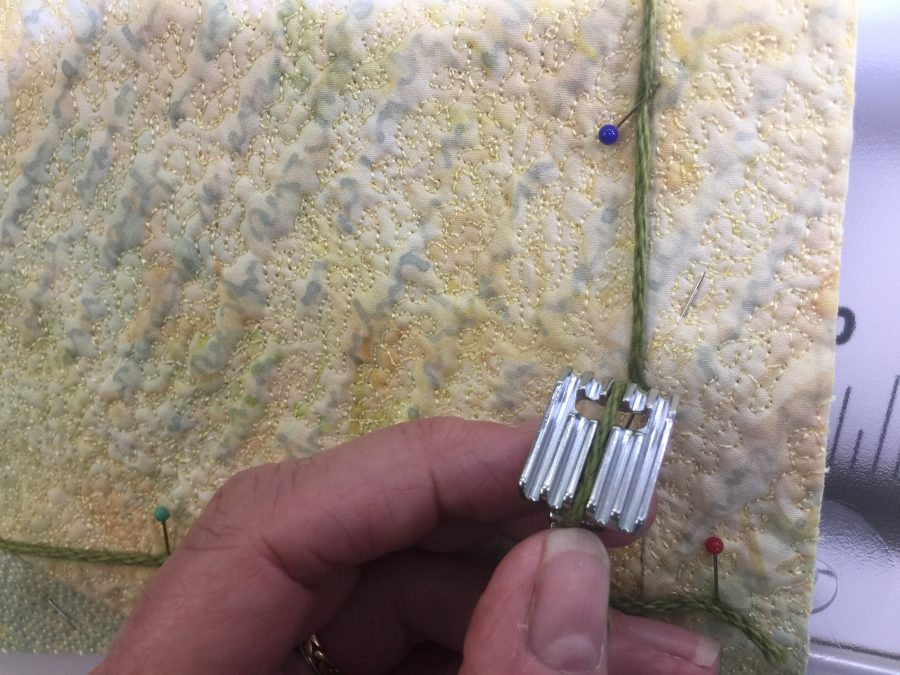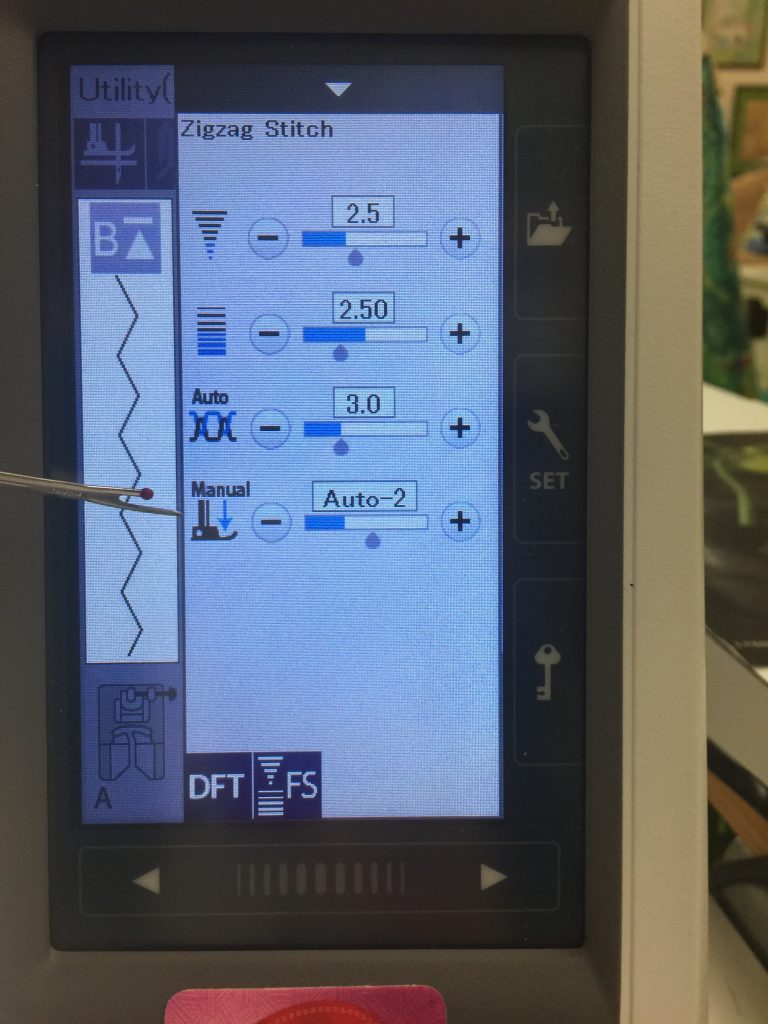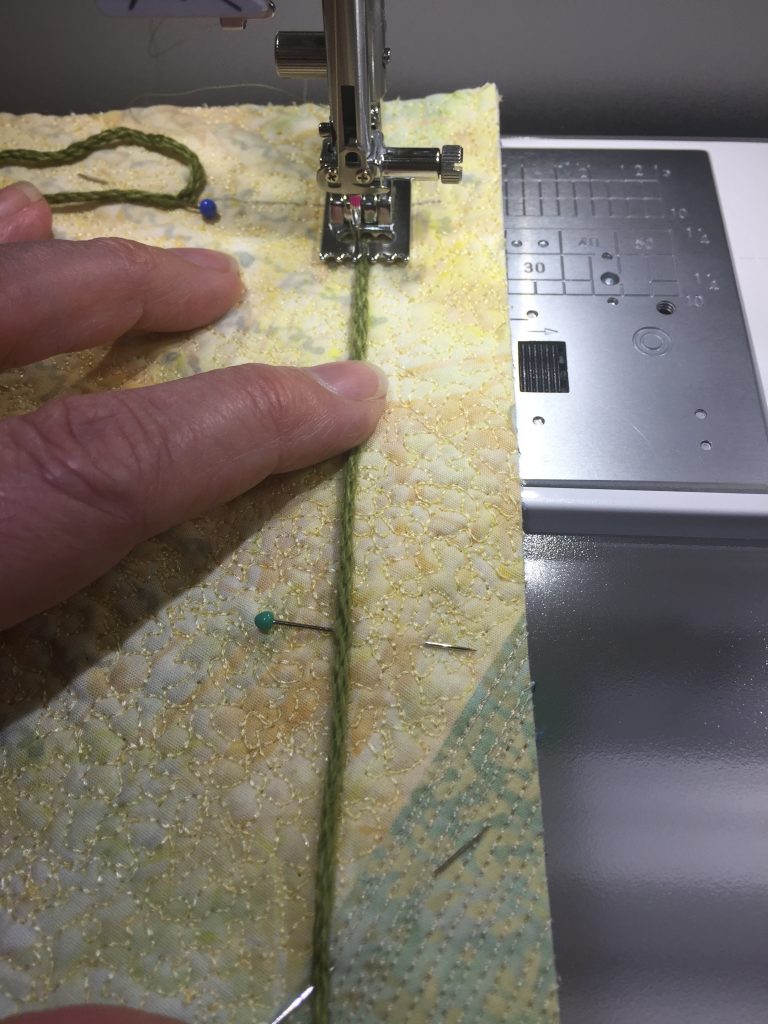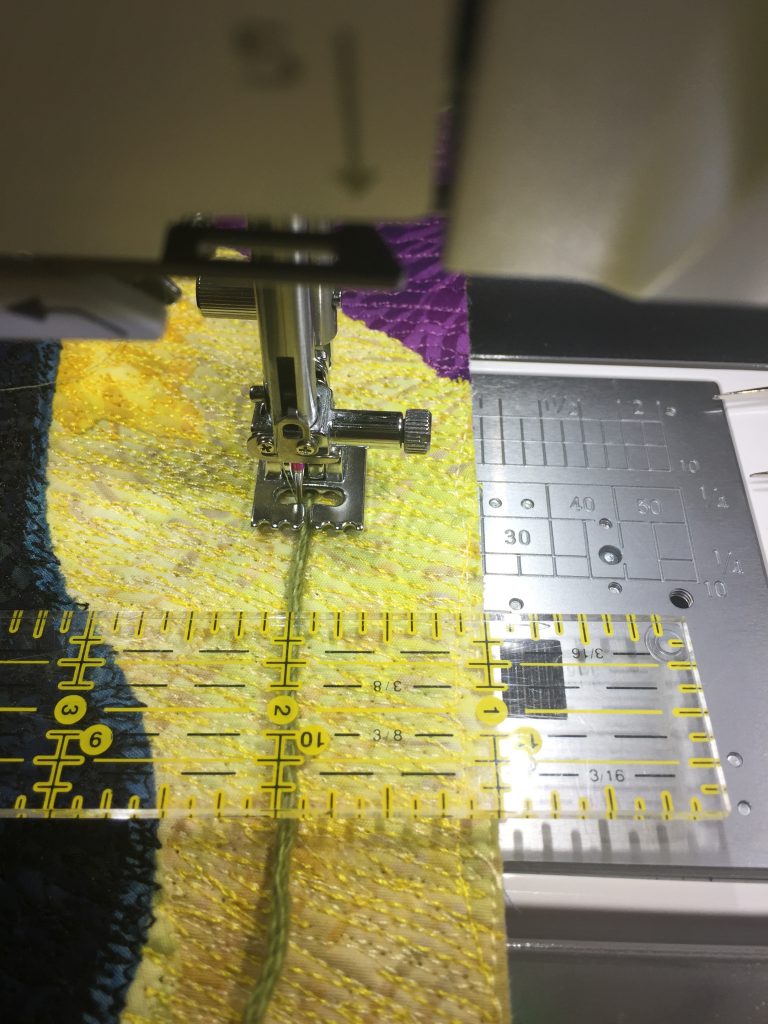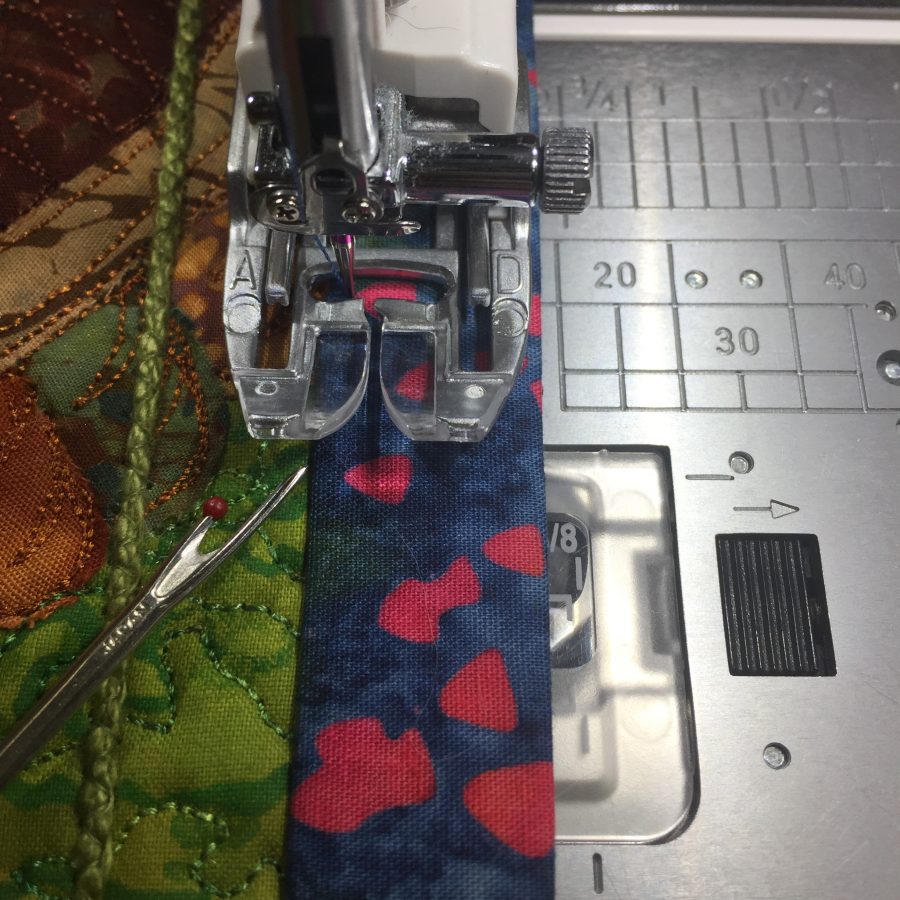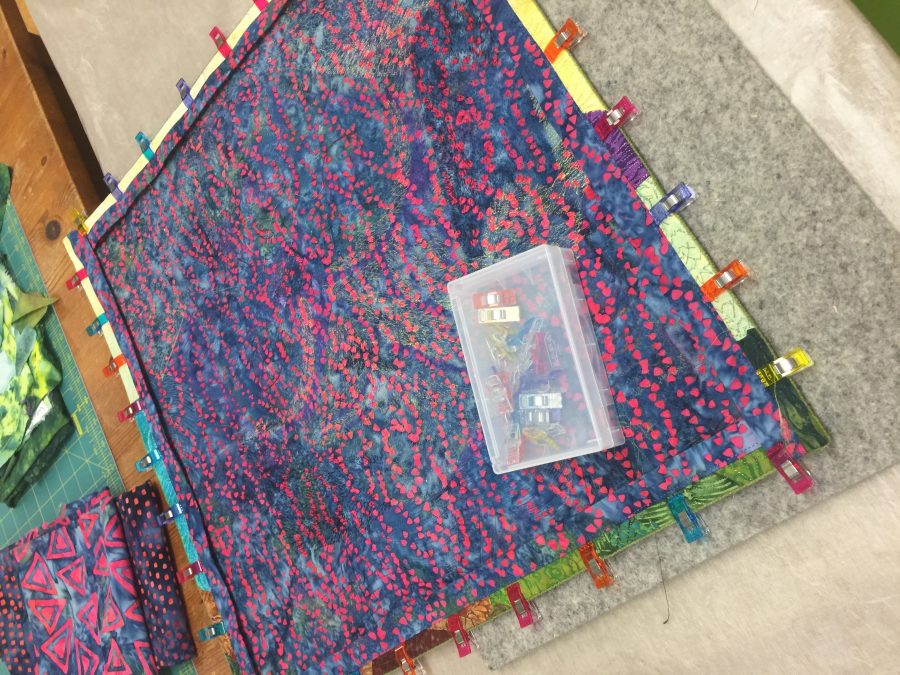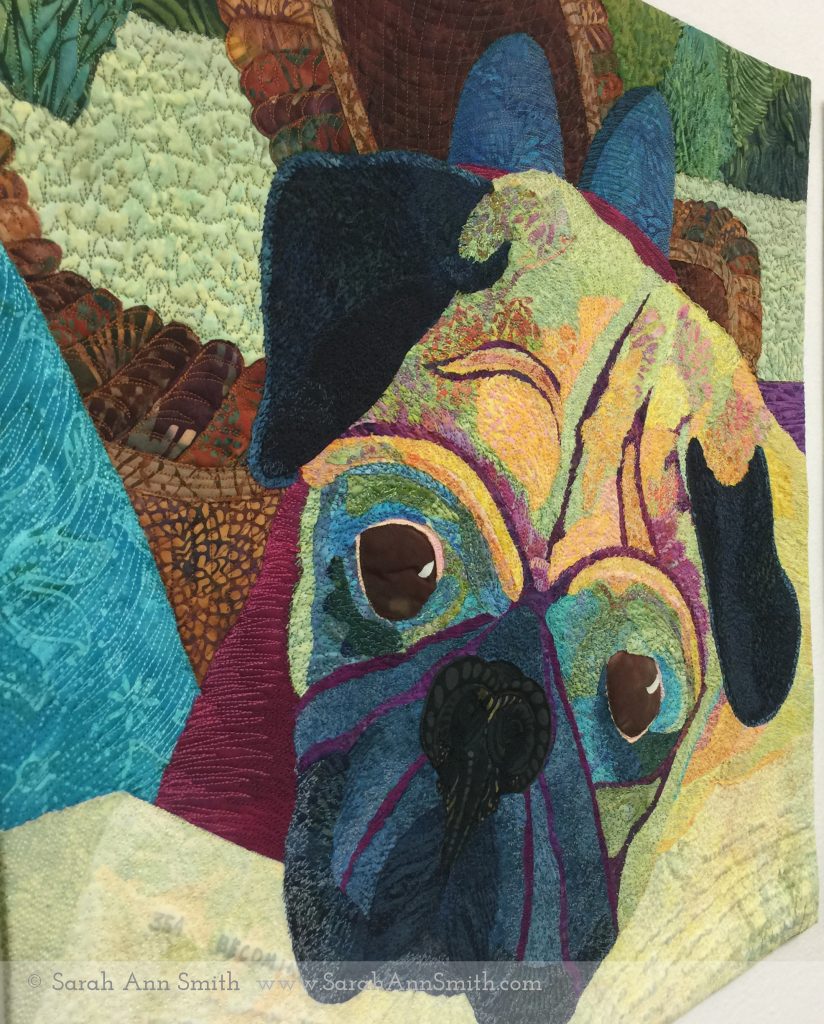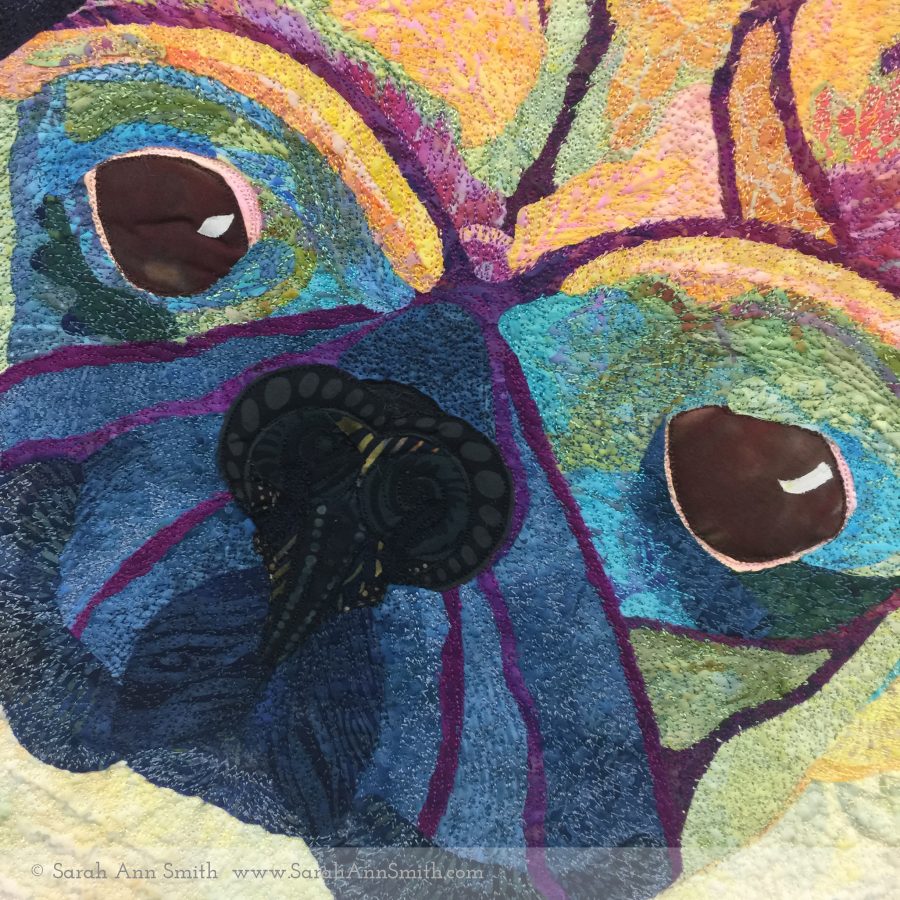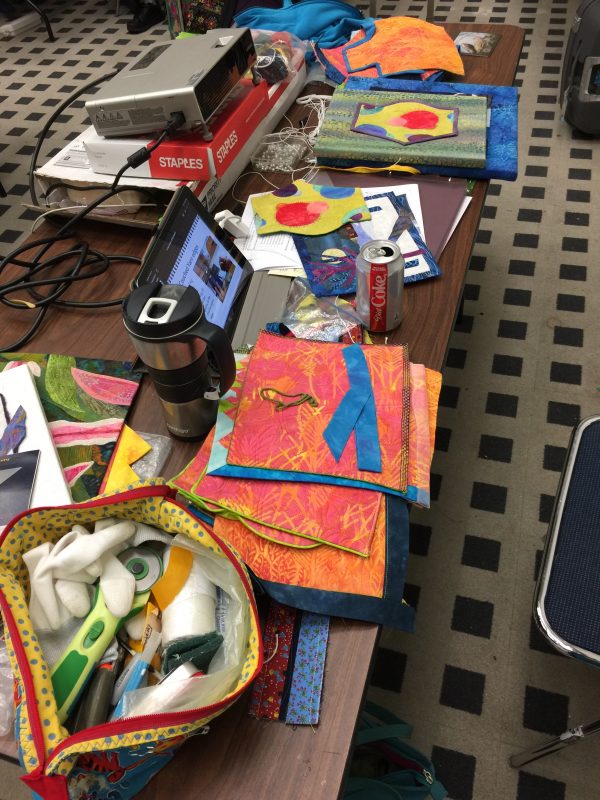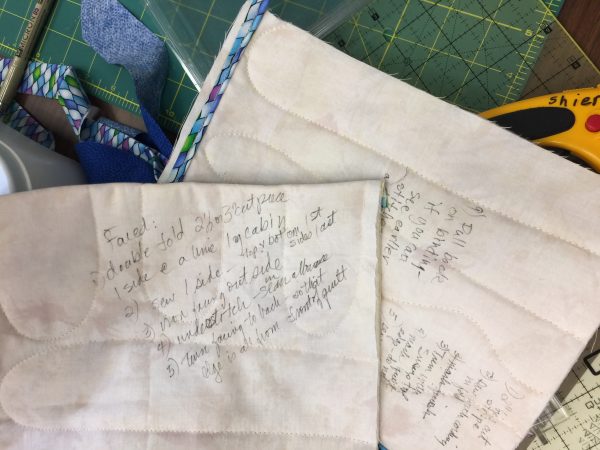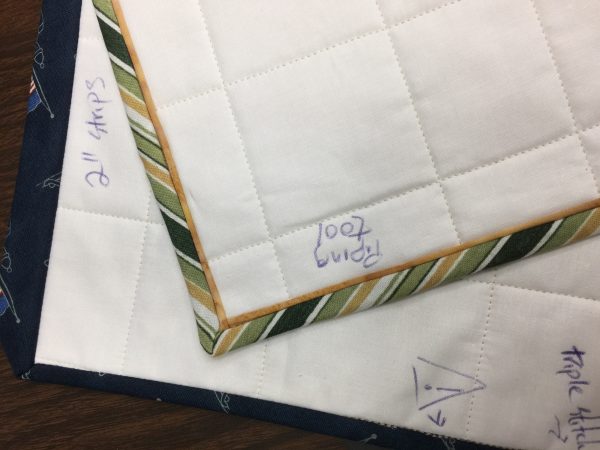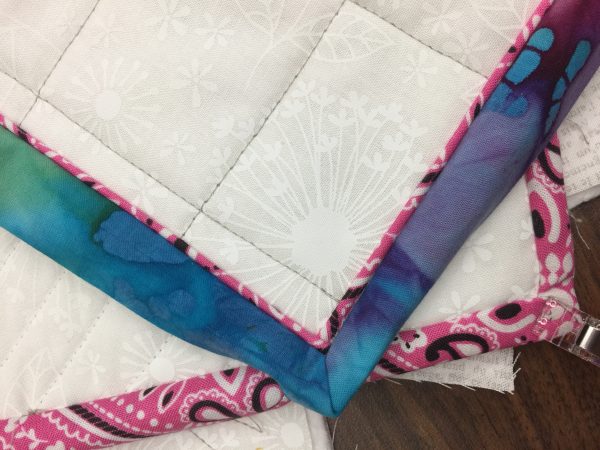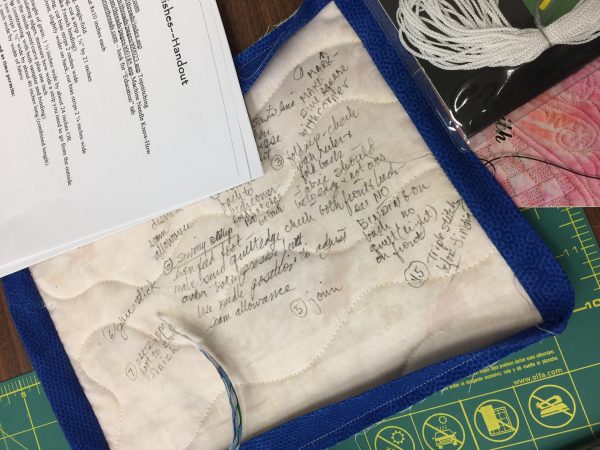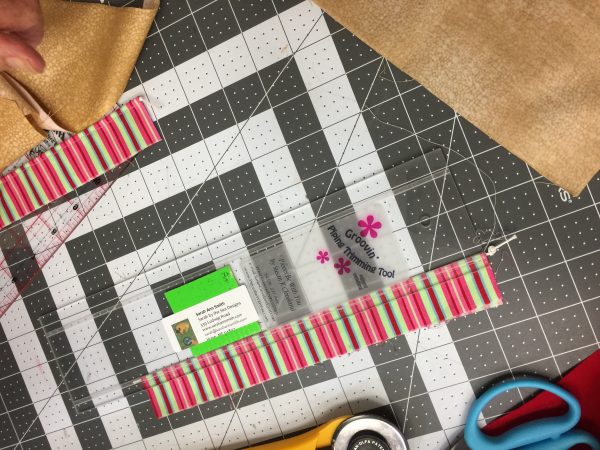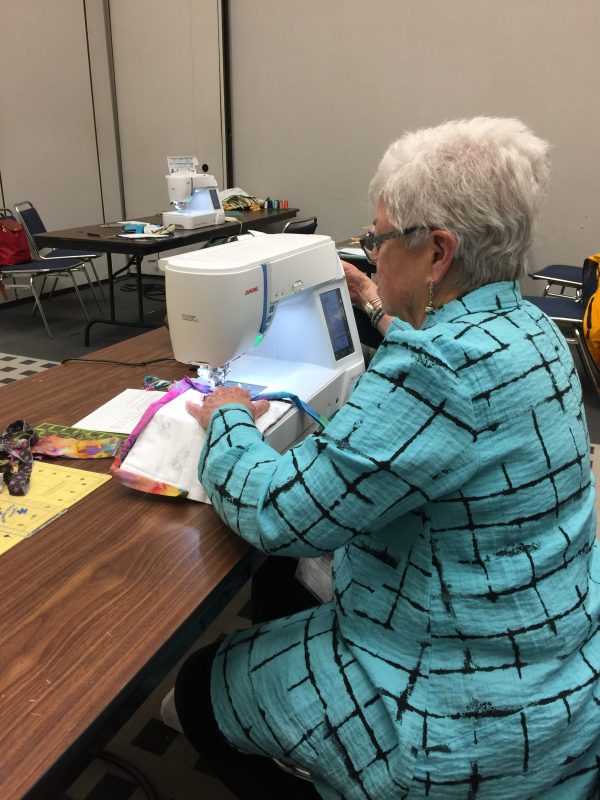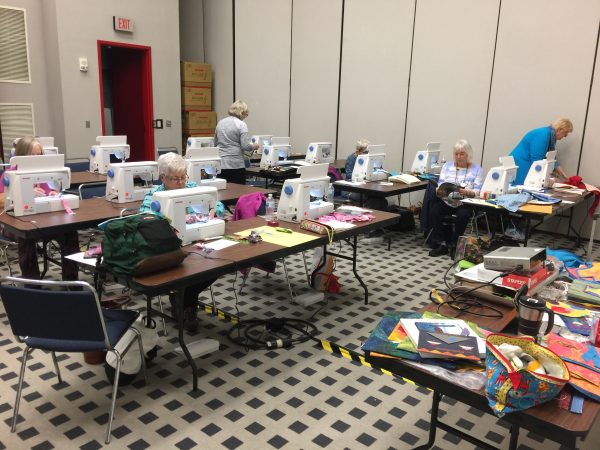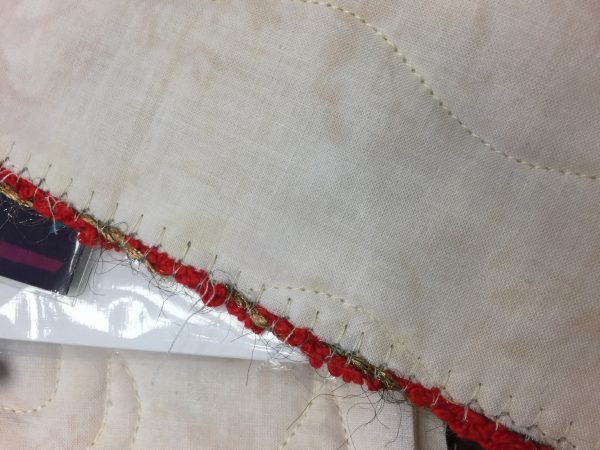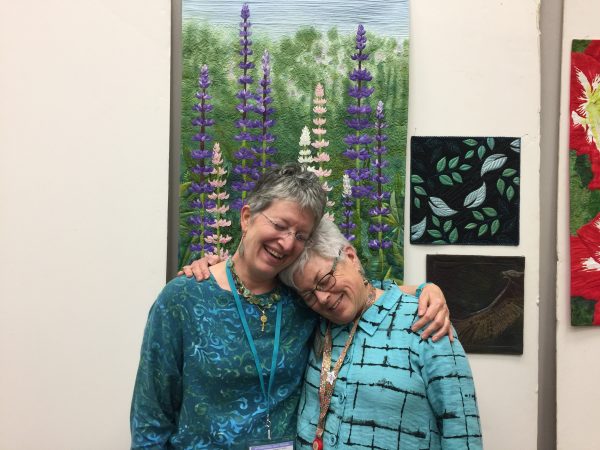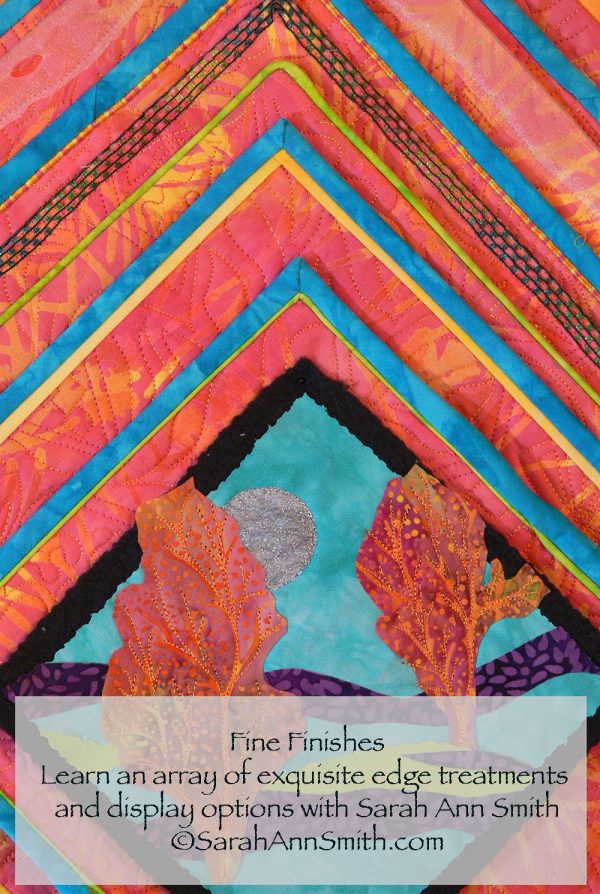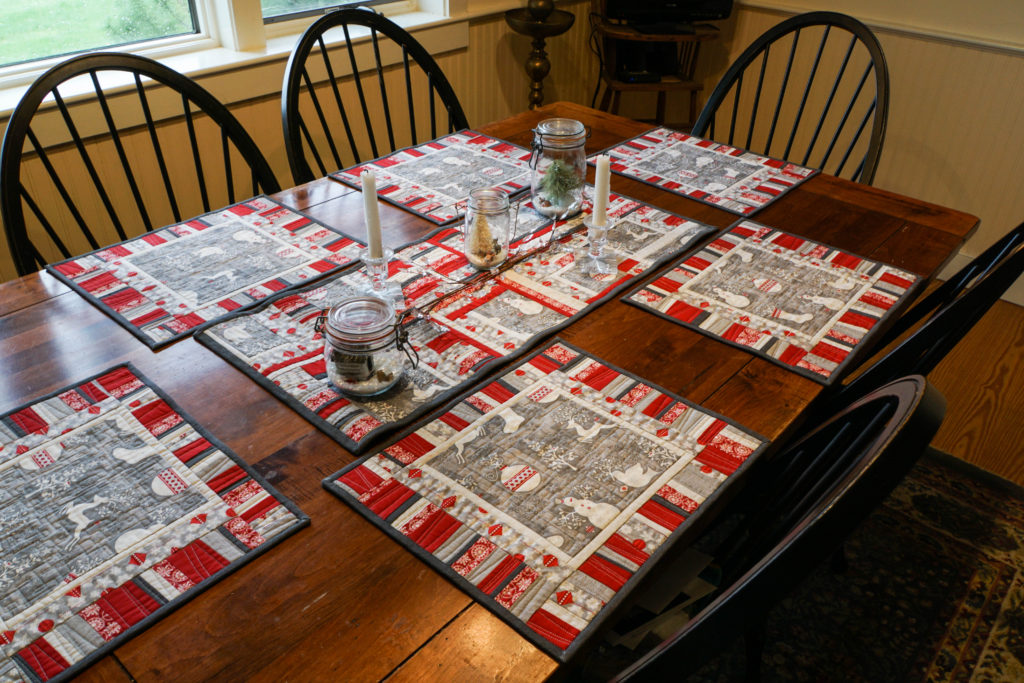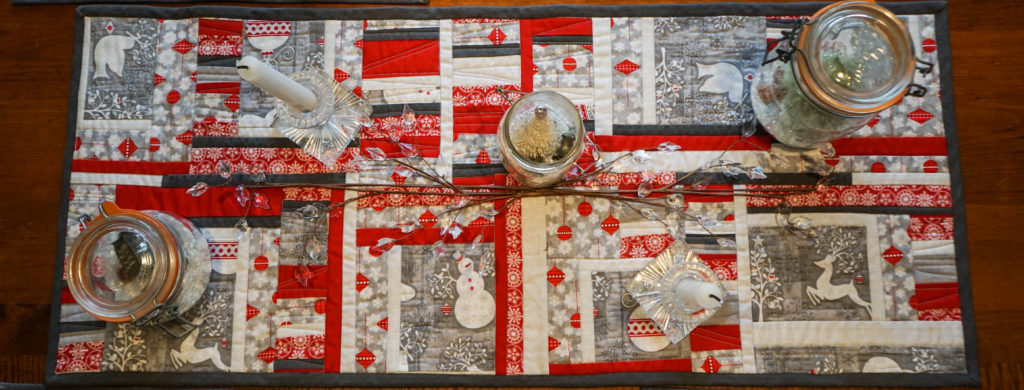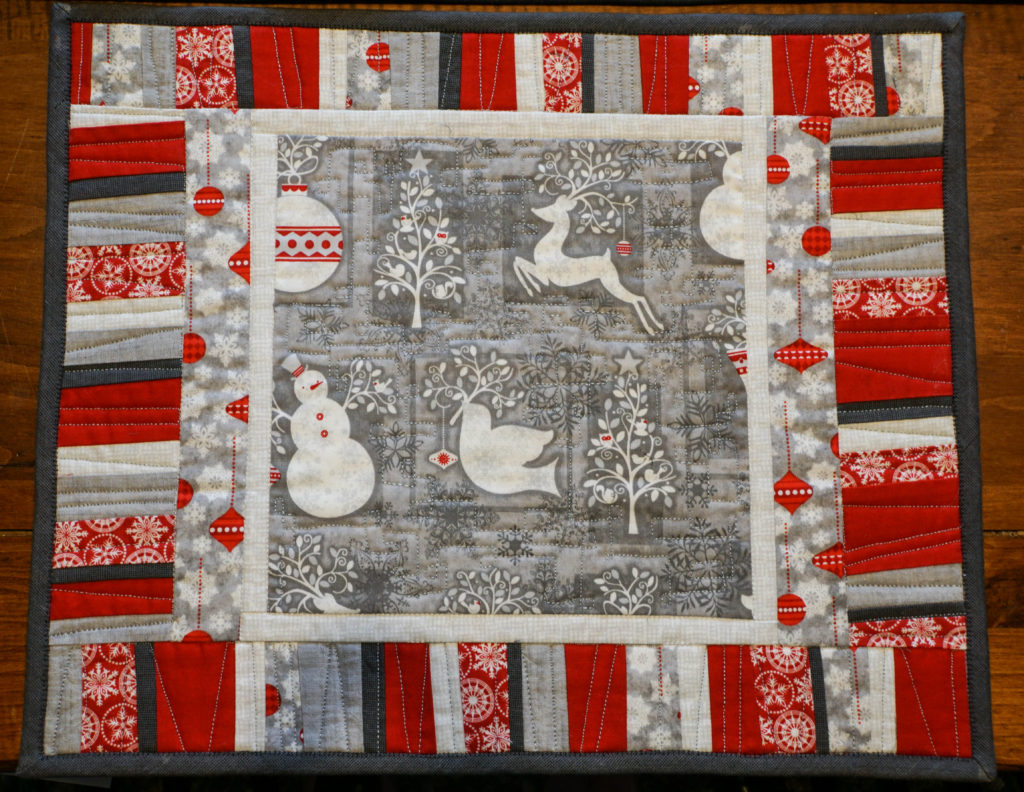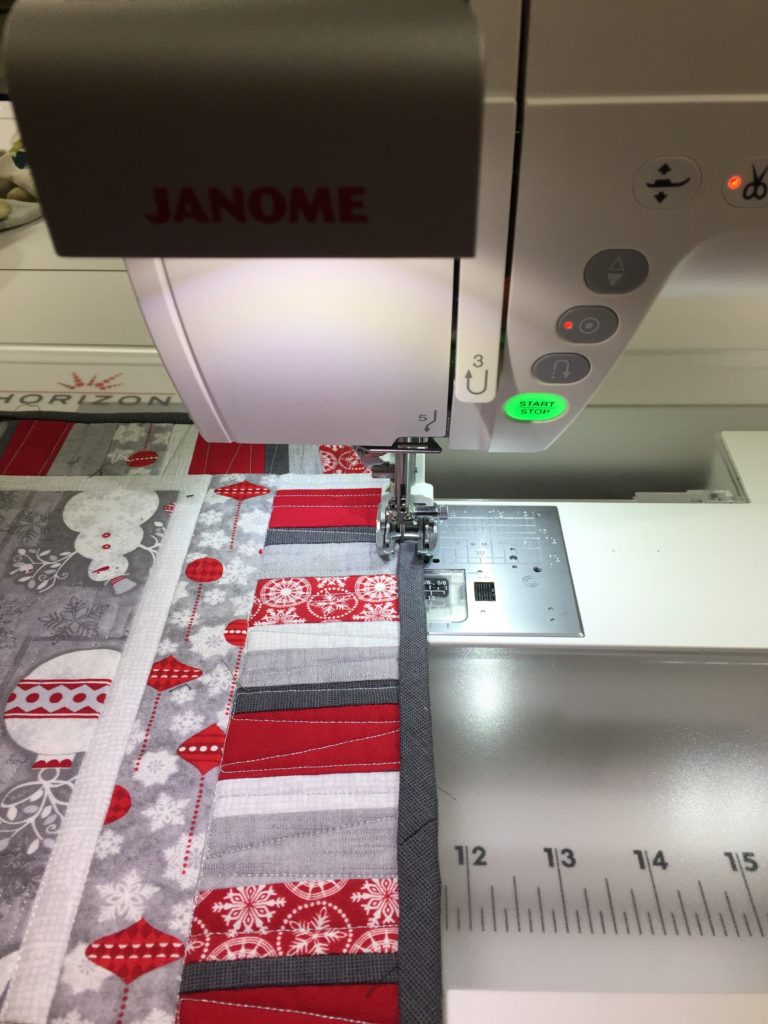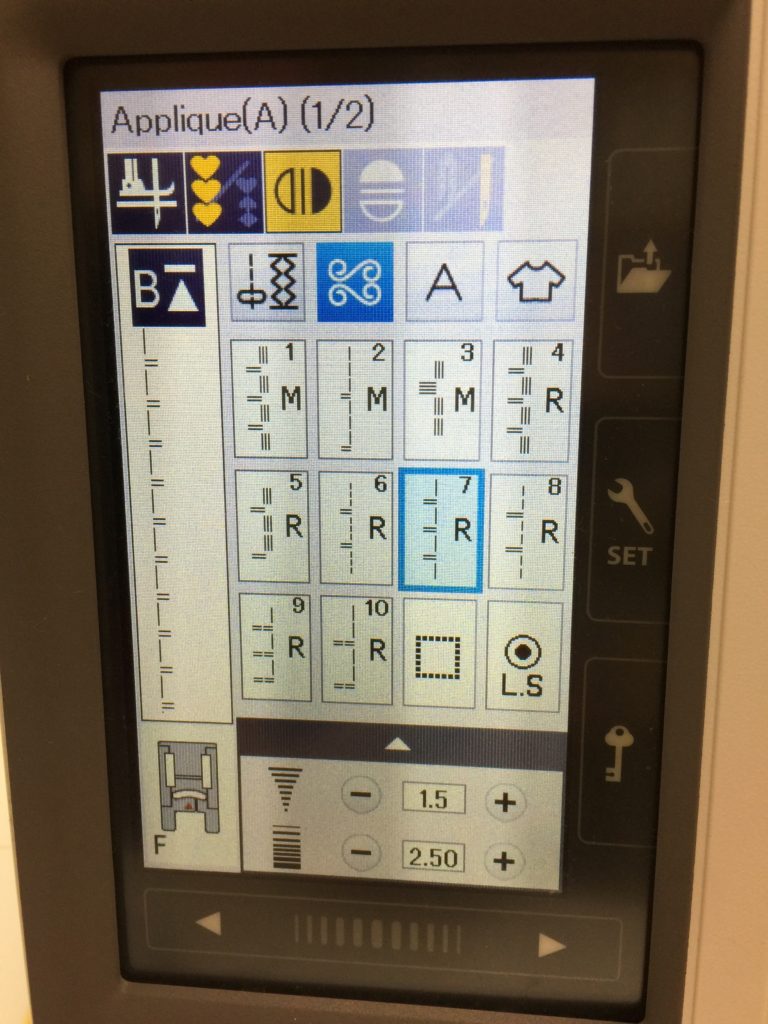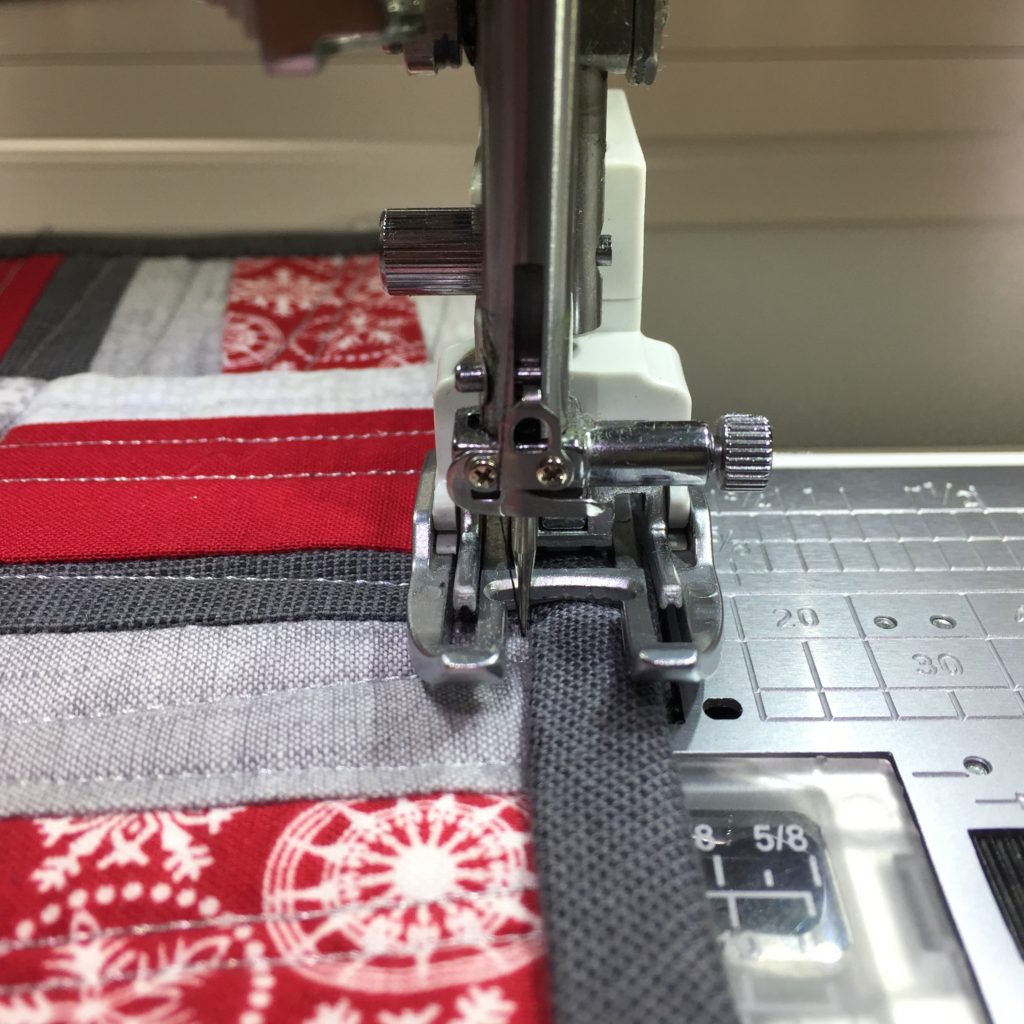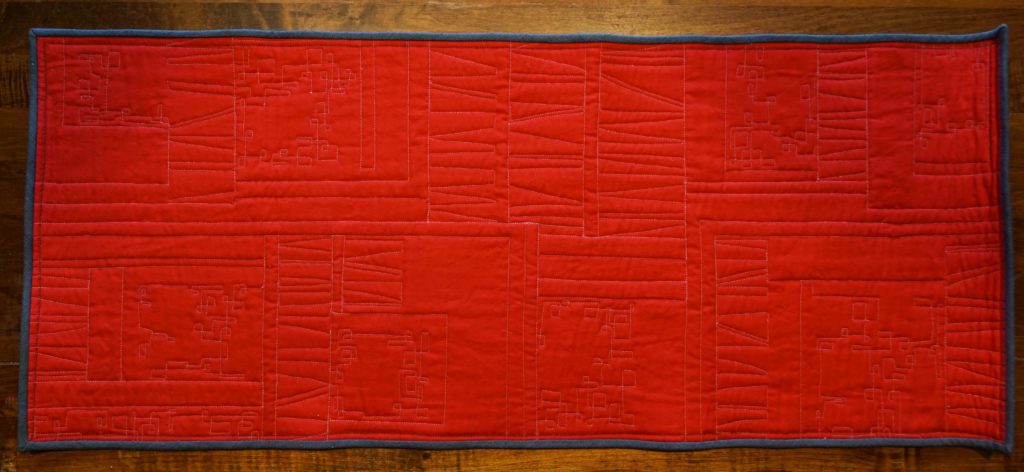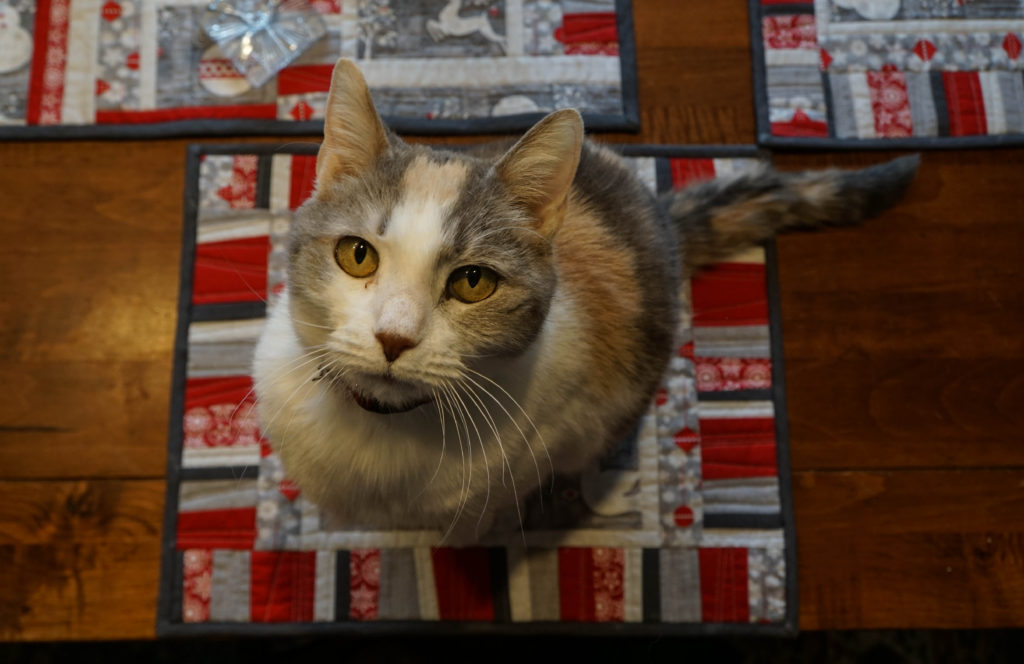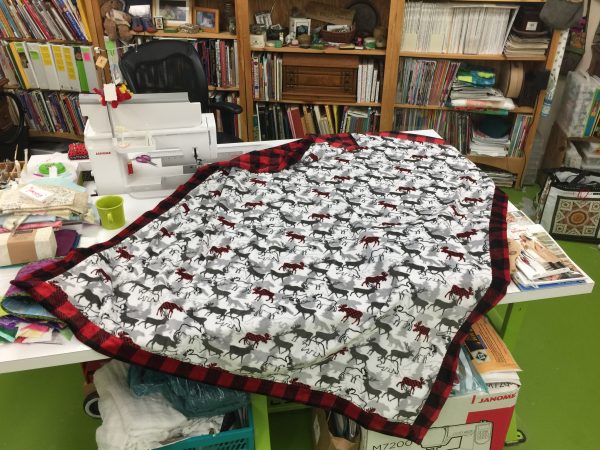
A heavenly combination: my studio, my Janome 9400 and Shannon Fabrics cuddle fabric–I’m ready for winter! This fabric is so soft you just want to pet it, snuggle under it, and not give it away as a gift!
Last May, Janome America had its first ever Janome Education Summit, and one of the presenters was Shannon Fabrics. From the kit they provided, I made the lovely summery top in this blogpost. But they also shared samples of their fabrics, including these two. True confession: I have this Elmer Fudd-esque love affair with red and black buffalo check. When I got home from the Janome event, I searched for the cuddle buffalo check on the internet wanting to buy multiple yards of it it but couldn’t find it anywhere, so contacted the presenter from Shannon Fabrics, who told me it wasn’t available until summer for the new fall season. I ordered some other Shannon Cuddle and Luxe Fur from Fabric.com (still waiting to make that up, stay tuned in December). Mid summer I still couldn’t find it, so I wrote to her again, and she SENT ME a big box to make not one but TWO projects. This throw is SO fast and easy and it would make an awesome holiday gift. Literally, I made it in a short afternoon!
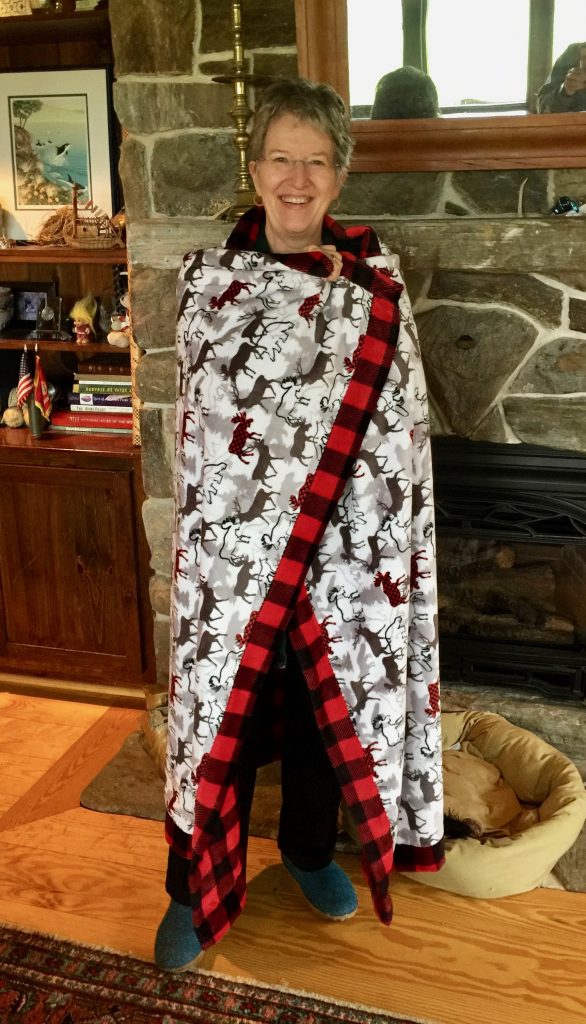
Me by the fireplace, wrapped in my jumbo throw. This is big enough for two people on a sofa. Or one person a cat and a pug in a chair. Ahem (photo below).
Here’s what and how:
The two fabrics pictured are available at Fabric.com here/minky buffalo check and here/Studio minky forest park, both in the scarlet color way. It is also available in a blue version, and there is a lovely silvery gray and white buffalo check too. I used two yards of each, but had a little of the print leftover–gonna make a hat out of that! You’ll also need some thread–color doesn’t really matter as it disappears into the pile, but I did use red. If I had found the Shannon free pattern and video (keep reading) I would have ordered 2 1/3 yards of the check since you need a little extra to wrap. Instead, I trimmed down my white print to work.
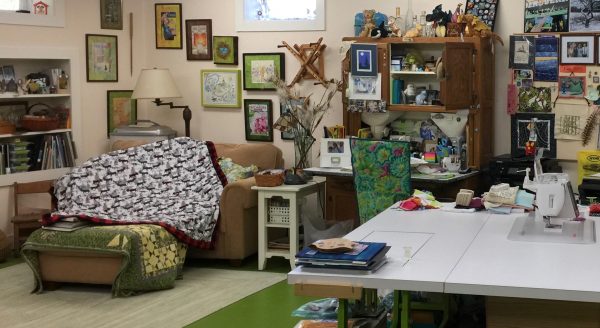
A blogpost with lots of pictures is better. Here is the throw on the love seat / reading zone in my basement studio. You can see how large it is!
TIPS and HINTS for working with Cuddle, Minky and Luxe Fur:
- The BEST tip for minimizing lint came from Ellen of Shannon Fabrics in May: you know you when you cut Minky and similar fabrics you end up with little bits of fluff EVERYwhere forever? Not any more! First, especially with the long fur-like fabrics (in my upcoming December project), cut your fleece from the back cutting only through the knit backing. This minimizes the snipped bits of fluff. You can also do as I did with the regular pile cuddle (what I used here) and use a rotary cutter. Then scoop up ALL the pieces (including leftovers if you keep them for small projects later), perhaps into a basket or large plastic bag, and take them to your DRYER. Yes, the clothes dryer. Tumble on no-heat for about ten minutes, then CLEAN THE LINT FILTER. About 80+ percent of that fluff will end up in the lint filter and not all over your sewing space and house. OMG it really worked!
- There is no stretch on the lengthwise grain. At all. If you make a garment (my next project) make sure you keep grainline in mind when fitting the garment.
- The fabric DOES NOT RAVEL. At ALL. That means you don’t have to turn under edges!!!!!! That means these projects are FAST!
- Stitch length: The fleece will hide your stitches. That means it will be challenging if you decide you need to remove any of the stitches, so pin carefully to avoid ripping out! Also, it is good to use a slightly longer stitch length. I used a 3.0.
- Best stitch for seams on knits: For garments, using a zigzag or “lightning” zigzag will at a 1.0 width will look like a straight stitch seam from the outside, but adds a little bit of flexibility and therefore helps avoid popping stitches in the seam.
Shannon Fabrics has many free patterns available. I used this one for my throw, a youTube video called Cuddle Self-Binding Blanket from Shannon and FleeceFun.com. I hadn’t found this video when I requested my fabric. If I had, I would have ordered 2 1/3 yard of the buffalo check and 2 yards of the forest park print and had a slightly larger (better!) throw. WATCH the video before you order fabric…it is only 7 minutes long and will help you.
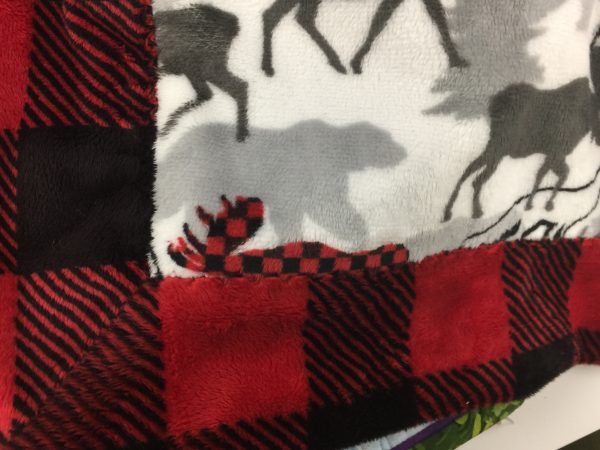
I used a serpentine stitch on my Janome 9400, an “S” shaped stitch to sew down the edges. You could also use a blanket stitch or a 3-step zigzag (the one that takes three stitches in one direction, then three stitches the other way). I mean, you can’t even SEE the stitches.
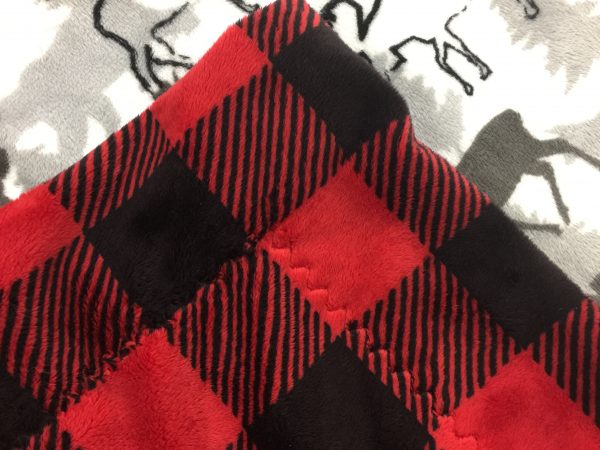
Here’s what the serpentine stitch looks like from the back. I used red thread and you can’t even SEE the red on the black square!
I have been a Janome Fan-Girl for 15+years now. I am now a Shannon Fan-Girl too! I’m finishing up a winter jacket with more of the buffalo check and a cream cuddle fleece lining, and will share something else that will be a gift for Christmas–perhaps in late November which is plenty of time for you to whip up a few of them in time for holiday giving. Or keeping. Ahem!
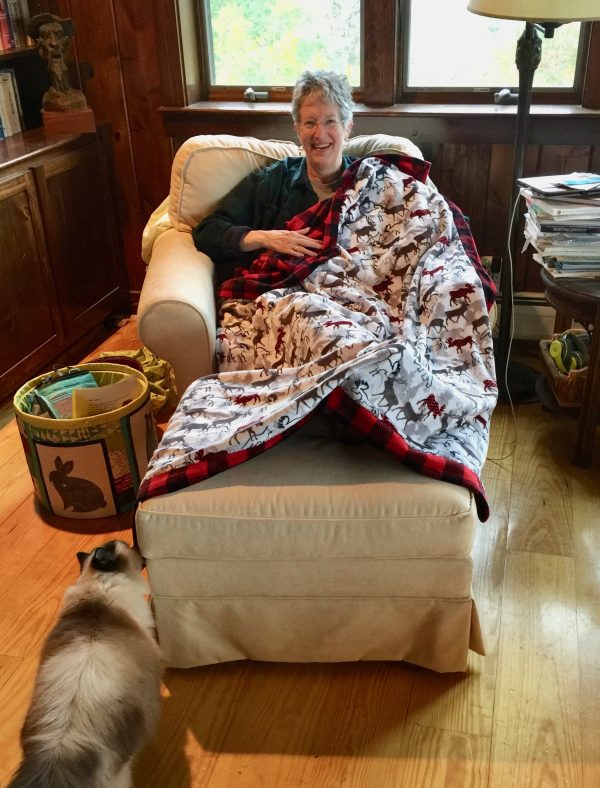
This is what I expect to look like most evenings in winter: in my chair in the living room, me and pug under the throw, cat checking things out, ready to make a dent in my pile of reading!
And because it is boring, this photo is last, but it shows the throw out flat.
THANK YOU SHANNON FABRICS for this fabric which I was totally prepared to order! I have purchased more of their fabrics own my own and know I will be using it again. If they ever make their “Spa” line in some bold colors (not pastel, not purple) I am so gonna make a bathrobe…..in the meantime, I have more snuggle quilts and gifts to make to keep me plenty busy. And as always, Thank You Janome America for making the best machines EVER!
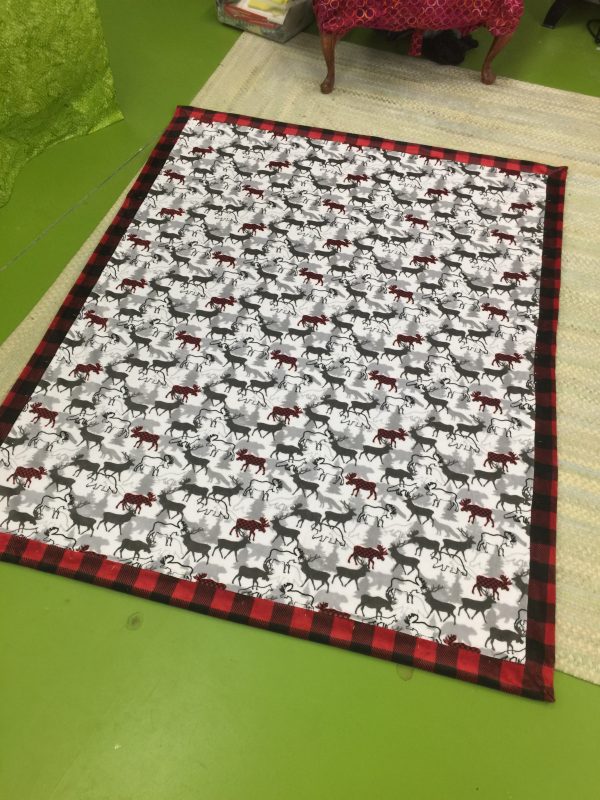
laid out flat on my studio floor (cement painted green!)…big, warm, SOFT. And did I mention, SOFT!
